视频连接
1. 什么是异常

异常分类:

JJava会把所有异常当做一个对象来处理,并定义一个基类java.lang.Throwable作为所有异常的超类。
在Java API中已经定义了许多异常类,这些异常分为两大类,错误Error和异常Exception
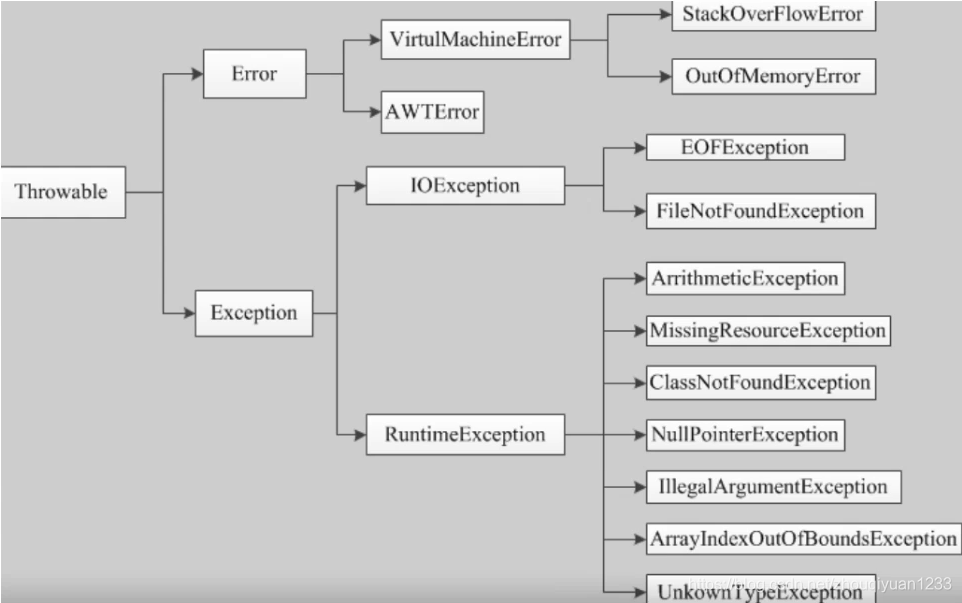
–
Error:
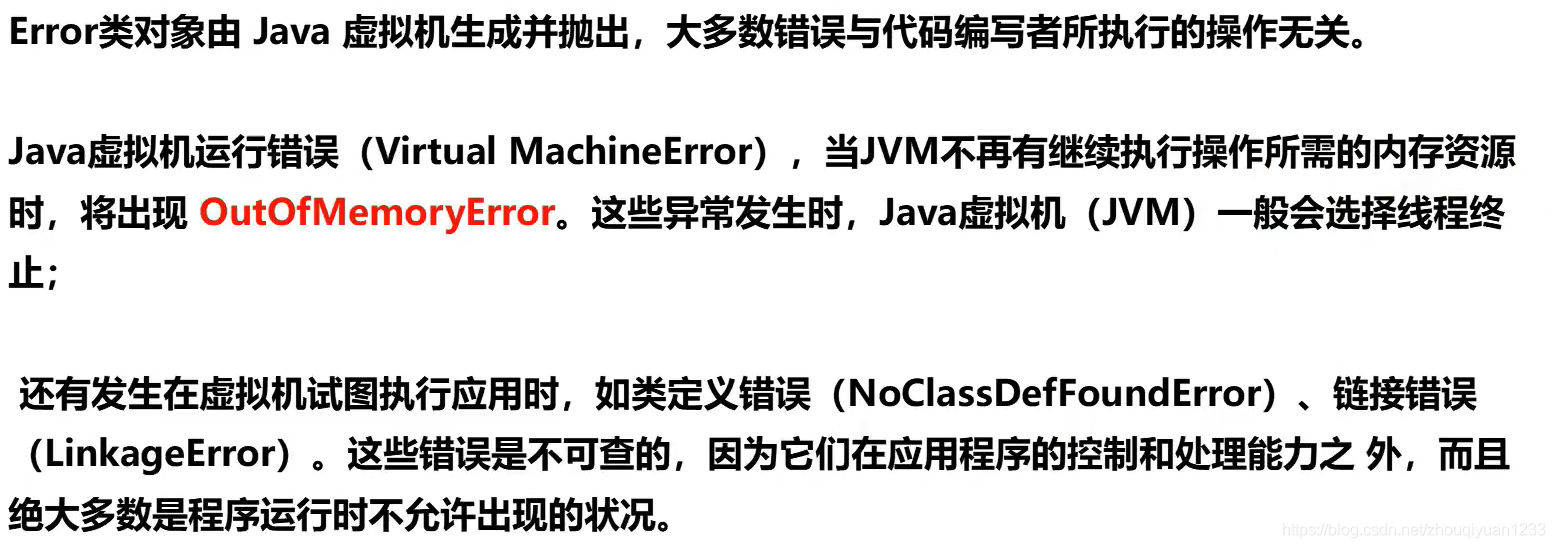
Exception:(运行时异常和非运行时异常)
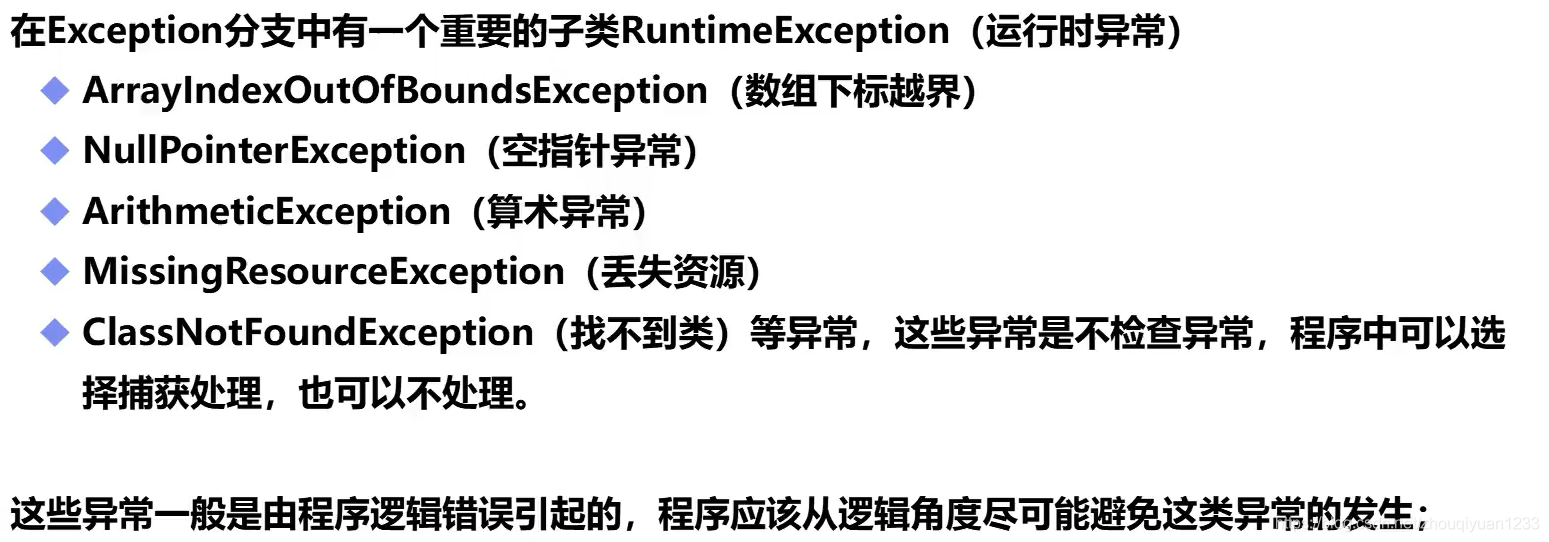
Error和Exception的区别:

2. 异常处理机制
抛出异常
捕获异常
关键字:
try 、 catch 、 finally 、throw 、 throws
–
被动抛出异常(try catch)
try 、catch 这两个关键字是必须的,finally关键字可有可无,主要处理善后工作(例如关闭资源,无论try是否捕获到异常,都会执行finally)
public class Demo01 {
public static void main(String[] args) {
int a = 1;
int b = 0;
try {
System.out.println(a / b);
} catch (ArithmeticException e) {
System.out.println("程序出现异常,0不能作为被除数!!!");
} finally {
System.out.println("finally");
}
}
}
捕获的异常类型中 Throwable 是最高的,它可以捕获几乎所有异常
catch 关键字可以使用多次:
public class Demo01 {
public static void main(String[] args) {
int a = 1;
int b = 0;
try {
System.out.println(a / b);
} catch (Error e) {
System.out.println("Error");
}catch (Exception e) {
System.out.println("Exception");
}catch (Throwable e) {
System.out.println("Throwable");
} finally {
System.out.println("finally");
}
}
}
注意:如果要一次捕获多个异常,catch后的参数要从上往下从小到大,才能都捕获到到异常:
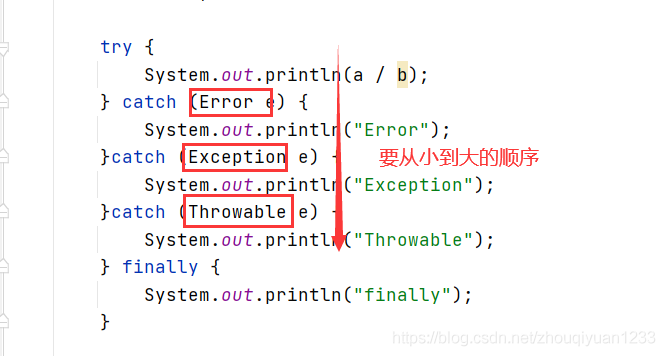
idea捕获异常代码快速生成:
选中要捕获的代码 Ctrl + Alt + T
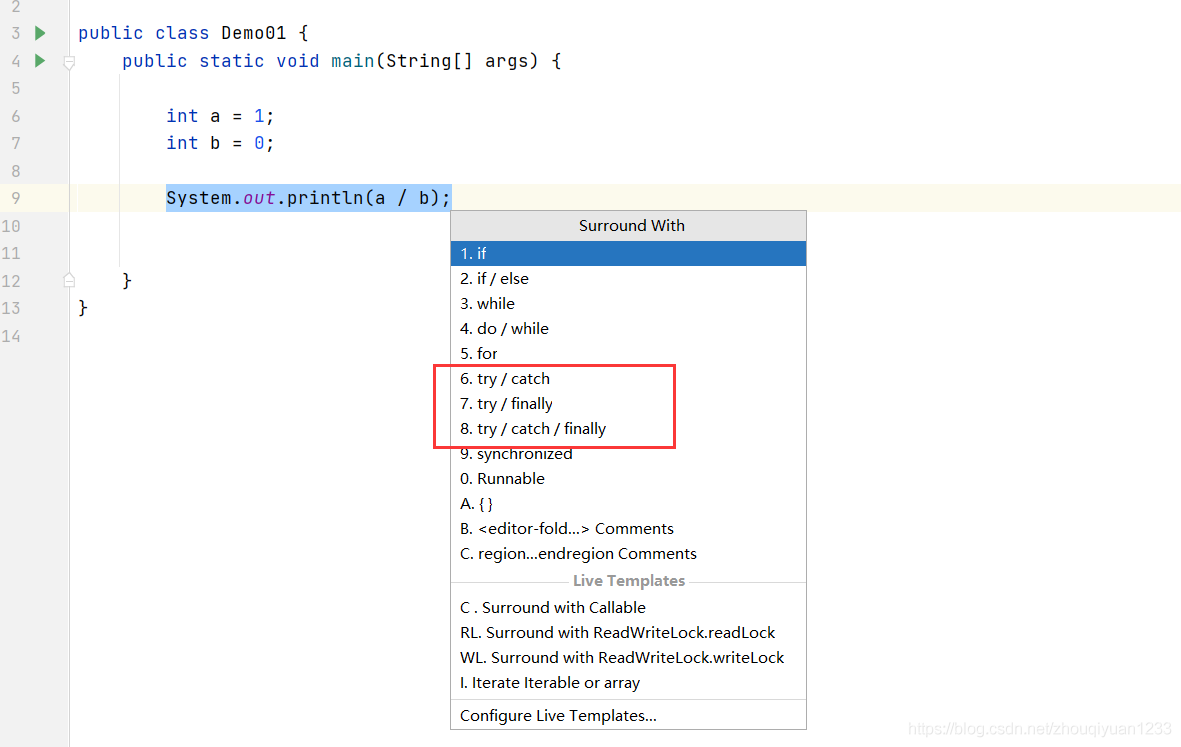
主动抛出异常(throw、throws)
throw 一般在方法里使用
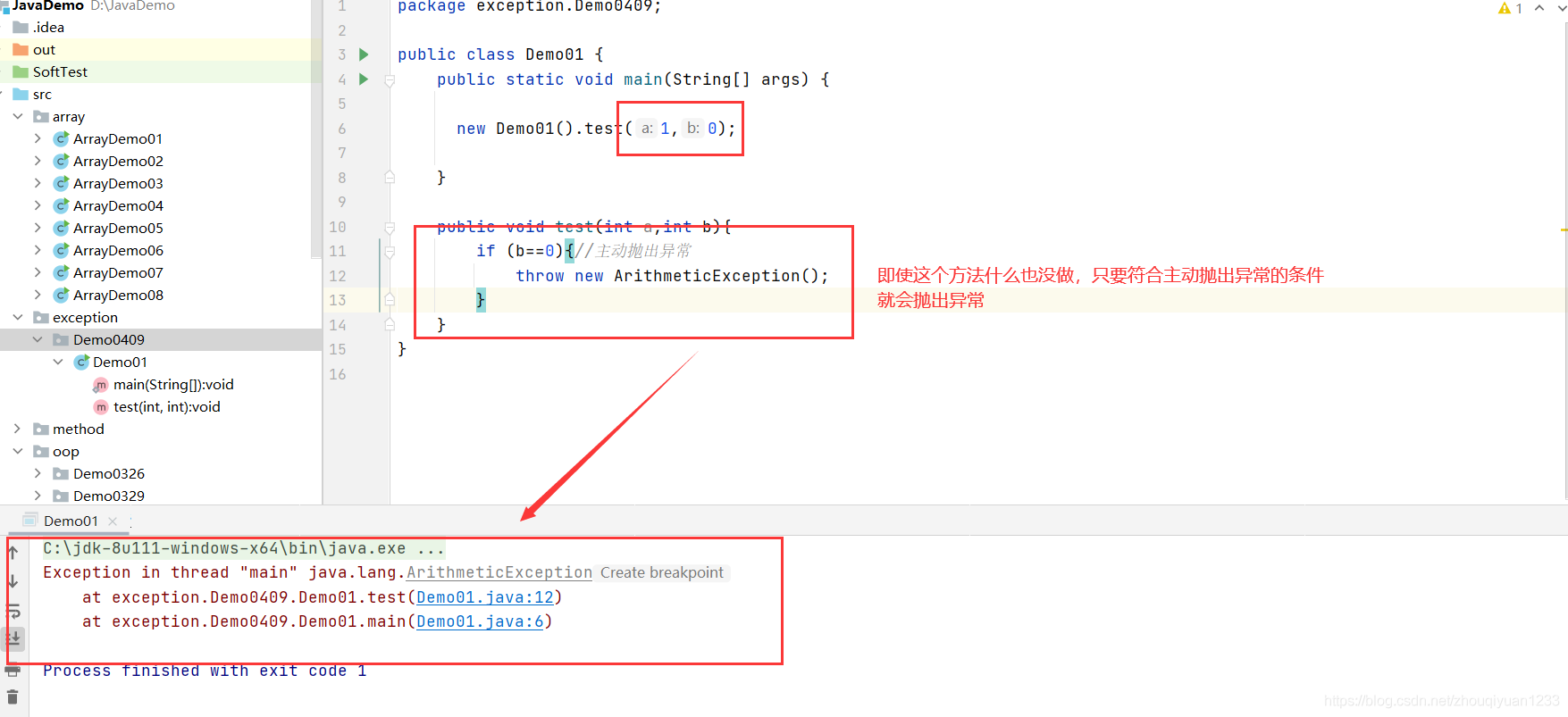
public class Demo01 {
public static void main(String[] args) {
new Demo01().test(1,0);
}
public void test(int a,int b){
if (b==0){
throw new ArithmeticException();
}
}
}
throws 一般在方法上使用
如果在方法中无法处理这个异常,就交给调用这个方法的方法来处理:
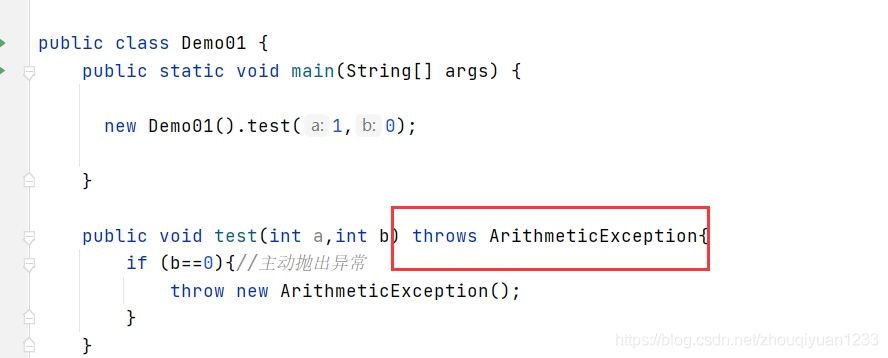
3. 自定义异常

自定义一个异常:
public class MyException extends Exception{
private int detal;
public MyException(int a) {
this.detal=a;
}
@Override
public String toString() {
return "MyException{" +"数字大于10了。异常,detal=" + detal +'}';
}
}
测试类Test:
public class Test {
static void test(int a) throws MyException {
System.out.println("传递的参数为:" + a);
if (a > 10) {
throw new MyException(a);
}
System.out.println("OK");
}
public static void main(String[] args) {
try {
test(11);
} catch (MyException e) {
System.out.println("抛出异常了:"+e);
}
}
}

4. 总结

补充:可以在try catch中的catch后添加一些处理异常的代码
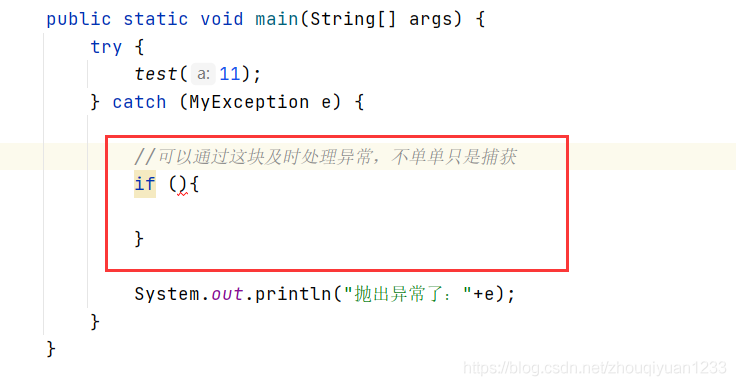
完(Java基础结束)
cs















